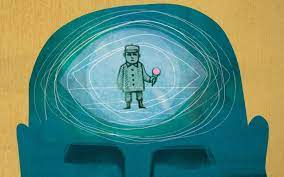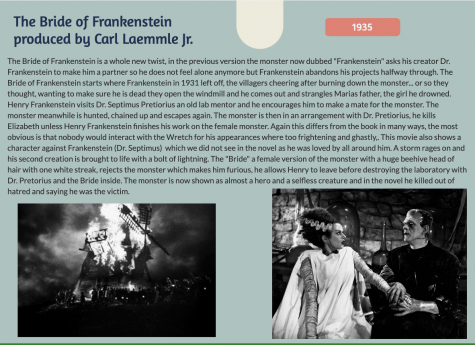Blinded by the Destination: A look into Hermann Hesse’s Siddhartha

When a person is only able to see their final destination they often fail to see how to get there; only once the idea of reaching this destination is let go will the path become clear. This is the underlying theme of the novel, Siddhartha by Hermann Hesse. Throughout the course of Siddhartha, we follow the protagonist through his life, his trials, and his tribulations. It becomes clear almost immediately that Siddhartha has only one goal, to achieve enlightenment. As the novel progresses, Siddhartha becomes increasingly dissatisfied with the life he is living because he has been unable to achieve the only thing he truly desires, enlightenment. It is only when Siddhartha is able to let go of the idea of achieving this goal that he succeeds in reaching enlightenment because when a person has nothing holding them back, no desires, no wishes, no final destinations, more often than not the path becomes clear. Hesse demonstrates this theme through his extensive use of repetition and metaphors.
Throughout the entirety of Siddhartha’s life, he has felt dissatisfied, unhappy, and unfulfilled. Hesse establishes this idea through the use of lists of emotions and the repetition of words such as “goal”. At the root of all this unhappiness is his desire to achieve enlightenment, it drives discontent in every place he ventures to. Unfortunately the more fervently he holds on to his goal the more blinded he becomes, and the farther away enlightenment seems. During the very beginning of Siddhartha, it is clear that he is so eager to reach enlightenment that he becomes unable to slow down and therefore realize that if he slowed down and stepped away from his goal that enlightenment would become achievable
“Siddhartha had one single goal – to become empty, to become empty of thirst, desire, dreams, pleasure, and sorrow – to let the Self die. No longer to be Self, to experience the peace of an emptied heart, To experience pure thought – That was his goal. When all the Self was conquered and dead, when all passions and desires were silent, then the last must awaken, the innermost of Being that is no longer Self – The great secret” (Hesse 14).
Siddhartha is quite literally living his life for one sole purpose, to have the ultimate understanding of the meaning of life. Hesse has embedded this excerpt from the text with many stylistic elements such as the pointed repetition of certain words and phrases that solidify the theme. The repetition of the word “goal” emphasizes in the reader’s mind that Siddhartha has only one desire, to achieve enlightenment. The repetition of “to become empty” emphasizes yet again that Siddhartha wishes to become enlightened. This idea is further facilitated by the list of emotions that Hesse states Siddhartha is experiencing. When Hesse writes “thirst, desire, dreams, pleasure, and sorrow”(14), he is allowing the reader to feel and experience this vivid emotional imagery that Siddhartha is feeling, all these emotions show just how badly Siddhartha wishes for his dream to become reality. Finally, the use of the capitalized “Self” and “Being” allows the theme to be further understood, through the understanding of enlightenment that these two words allow. The use of the capitalized Self is in a way meant to represent the Soul, the innermost understanding that lies within us all. While the lowercase self is meant to represent the part of us that walks us through life such as supplying us with our most basic needs. Siddhartha is seeking to destroy “Self” so he can step out of his conscious body and reflect on his multiple selves, which is ultimately enlightenment. Siddhartha’s problem is that he has become so overly obsessed with the idea of destroying his “Self”, so consumed with the idea of achieving enlightenment that he has been prevented from finding his “Self” in the first place. One could argue that much later on in the novel when Siddhartha lets go of his desires and begins to learn from the river, from the people he has met, and from his life as a whole that he is able to subconsciously discover his “Self”, which is when he finally becomes enlightened.
By now Siddhartha has lived many lives yet he has not been able to find the one thing he had been so devoted to. Although Siddhartha has experienced so many situations he has only performed these actions to achieve enlightenment and in doing so he has been inhibited from actually learning from his experiences.
Siddhartha was deeply horrified. So that was what he had come to; he was so lost, so confused, so devoid of all reason, that he had sought death. This wish, this childish wish had grown so strong within him: to find Peace by destroying his body. all the torment of these recent times, all the disillusionment, all the despair, had not affected him so much as it did the moment the Om reached his consciousness and he recognized his wretchedness and his crime. (Hesse 89).
Listening to the river, Siddhartha is able to reflect on his entire life, and through doing so he realizes that he had truly lived his life to achieve enlightenment, he realizes that by only living his life for one thing, he missed out on actually learning from his experiences. “This wish, this childish wish had grown so strong within him: to find Peace by destroying his body” (89). This is Siddhartha’s flaw: by never truly experiencing life he was never able to see what needed to be done to reach enlightenment. He is now able to understand that “destroying his body” (89) or attempting to destroy his Self only brought his two selves further apart. The repetition of the word “he” makes it clear to the reader that Siddhartha is reflecting on himself. This repetition is important to understand because this is one of the first times in the novel that Siddhartha is able to reflect on his actions and learn from them. Through this learning, he understands what has been holding him back. The use of the word “Om” represents knowledge. “the moment the Om reached his consciousness and he recognized his wretchedness and his crime” (89). Although “Om” is a very literal incantation used commonly in Buddhism, it is also widely understood to be the moment when understanding connects with your prayer, in this case, Siddhartha hears Om and he is able to understand his “wretchedness and his crime” (89). Although not explicitly stated within the quote Siddhartha learns all of this from the river he is sitting beside, the river is a metaphor throughout the novel for knowledge and understanding as well as the cycles of life. Siddhartha first passed over this river in a very different stage of his life when he still lived for nothing but enlightenment. When Siddhartha returns to the river he has changed and is finally able to understand the mistakes he has made. In this way, Siddhartha has made a full cycle back to where he started, the only difference is now he has a new understanding of how to live life for more than a destination that needs to be reached.
Siddhartha is no longer burdened by the weight of unreachable pressure, due to this Siddhartha gains an understanding of the mistakes he has made in the past. He realizes how seeking can easily turn into a blinded walk that leads you in no real direction. Hesse demonstrates this idea through the use of the repetition of the word “he” as well as the use of Govinda as a foil for Siddhartha. When Siddhartha meets Govinda all that he has learned throughout all of his experiences come together, and without Siddhartha even noticing he has reached his final destination and he can understand how the act of seeking destroyed the possibility of finding enlightenment.
‘When someone is seeking,’ said Siddhartha, ‘ it happens quite easily that he only sees the thing that he is seeking; that he is unable to find anything, unable to absorb anything because he is only thinking of the thing he is seeking because he has a goal because he is obsessed with his goal. Seeking means: To have a goal; but finding means: to be free, to be receptive, to have no goal. You who is the one, or perhaps indeed a Seeker, for in striving towards your goal you do not see the many things that are under your nose’(Hesse 140).
This excerpt from Siddhartha perfectly puts into words the theme of the novel, when life is lived for only one goal this goal will be ultimately unattainable and will only be made possible once the idea of achieving it is let go. When Hesse writes “because he is only thinking of the thing he is seeking because he has a goal because he is obsessed with his goal”, he is demonstrating how Siddhartha reflects on his life and his mistakes. This is further facilitated by the repetitive use of “he”, because although Siddhartha is addressing Govinda he is drawing the knowledge from his past experiences. The theme is also demonstrated by the use of Govinda as a foil for Siddhartha. Much like Siddhartha, Govinda has also become stuck in seeking. Furthermore, when Siddhartha looks at Govinda he sees his previous self which allows Siddhartha to further understand his mistakes and ultimately become enlightened. Govinda becoming stuck in this act of seeking is a continuation of the cycle Siddhartha had originally worked so hard to escape.
All of Siddhartha’s life he has been stuck; he became so obsessed with his goal, to reach enlightenment, that he had forgotten to experience living. When something becomes the center of one’s life, it is easy to be all consumed by this one thing. A person can become blinded by the thing they are looking for. This is precisely what happened to Siddhartha, he became blinded by the grandeur of what enlightenment offers, so much so that he failed to realize how to achieve enlightenment. As demonstrated in the theme of Siddhartha once Siddhartha learned to listen, to the river and most importantly to himself was when he was finally able to let go of the desire that was holding him back. “finding means: to be free, to be receptive, to have no goal” (Hesse 140). Hesse emphasizes the theme of the problems that arise when something becomes the center of one’s life and conveys further understanding throughout the entire novel through the use of metaphors, such as the river which represents knowledge and the cycles of life. The use of consistent repetition of certain words, emphasizes and solidifies the theme in the reader’s mind. The use of the capitalized and lowercase “Self” allows the reader to understand enlightenment in a different context. Finally, the use of Govinda as a foil for Siddhartha conveys the theme from a different person and perspective. Siddhartha has lived many lives, but in the end, Siddhartha learned to live life without something blocking his path, he learned to live his life without being blinded by false ideals, Siddhartha learned to live life with clarity.




